Storm Arwen 2022 - Devastation of Trees
Friday, 14 January 2022
"The scenes are reminiscent of WW1 battlefields after a bombardment" "The storm just snapped the trees in half. It looks like a war zone". "It's shocking to see the utter devastation left behind".
"Storm Arwen was named by the Met Office on 25 November 2021.
On 26th November 2021.the UK Met Office issued what they described as a "rare red weather warning" due to a deep pressure moving southwards from the Atlantic Ocean. This forecast was of extreme wind and waves on the eastern coast of Scotland at Aberdeenshire, all the way down to the Tees Estuary in England.
Red warnings for wind were issued for north-eastern parts of the UK, as well as extensive orange and yellow warnings for much of Scotland, Northern Ireland, Wales and most of England.
The damage caused by the storm was compounded by the fact that "sustained winds with gusts in excess of 90 mph were, unusually, from the north-east, affecting trees that do not normally have to yield to those winds."
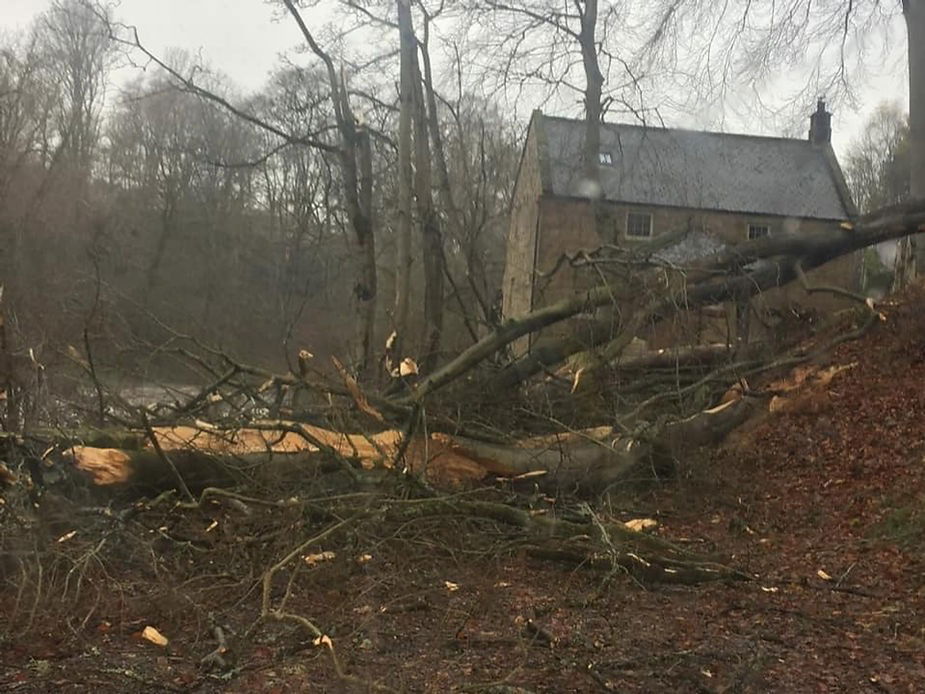
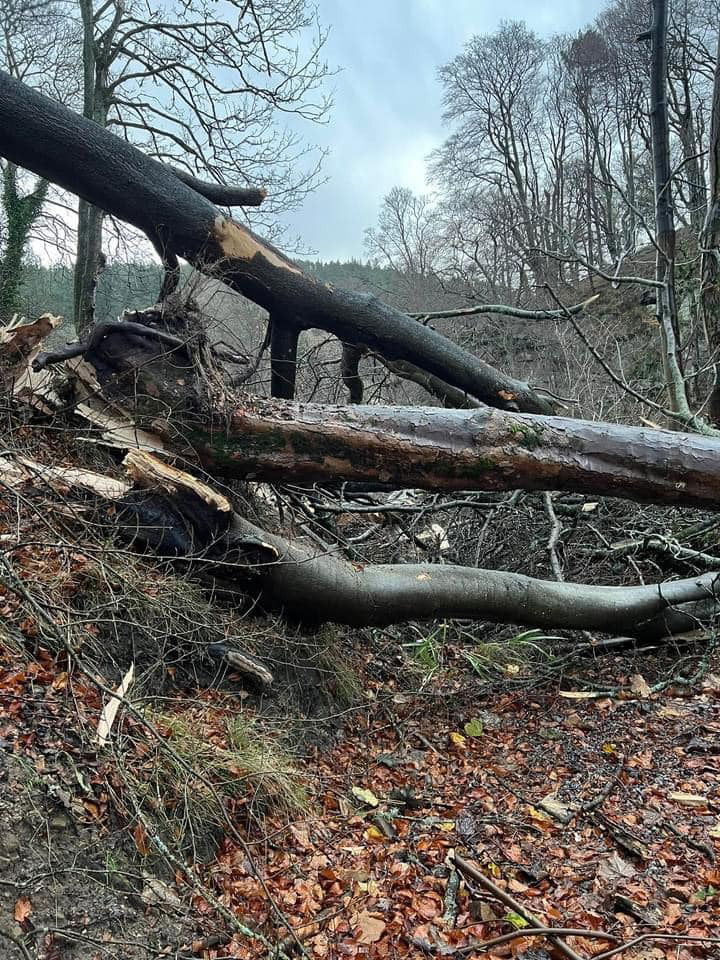
Trees down at Thrum. Photos: Debbie Noble
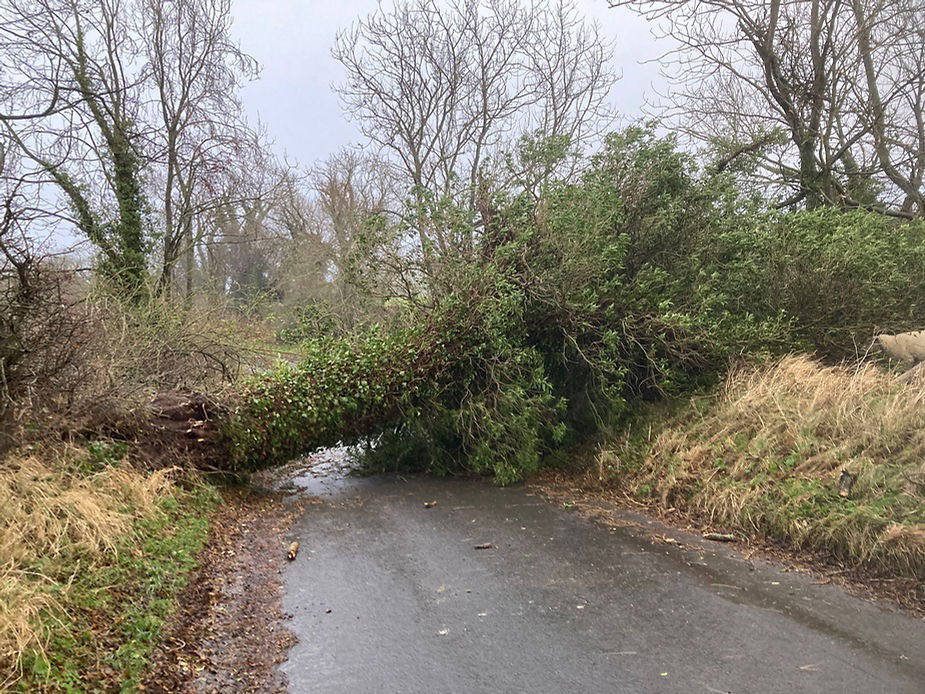
Photo: Alan Winlow
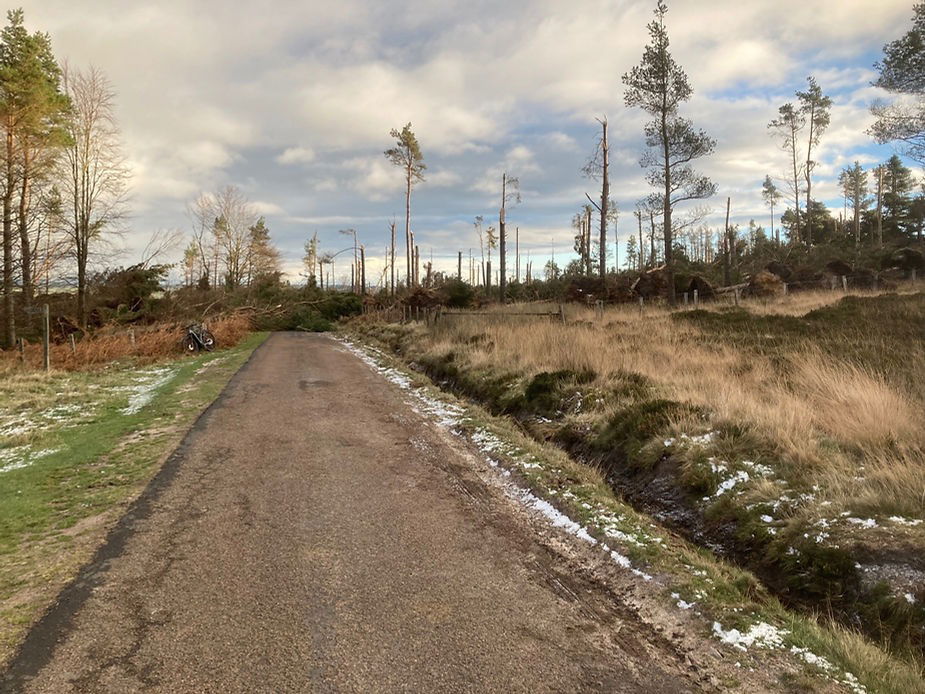
The photographs above and below show the 'wood' at Simonside and the access road through the Lordenshaw 'wood' car park. Alan Winlow took them. He comments: "The scenes are reminiscent of WW1 battlefields after a bombardment"
Alan continues: "When will people in positions of power DO something meaningful about climate change?"
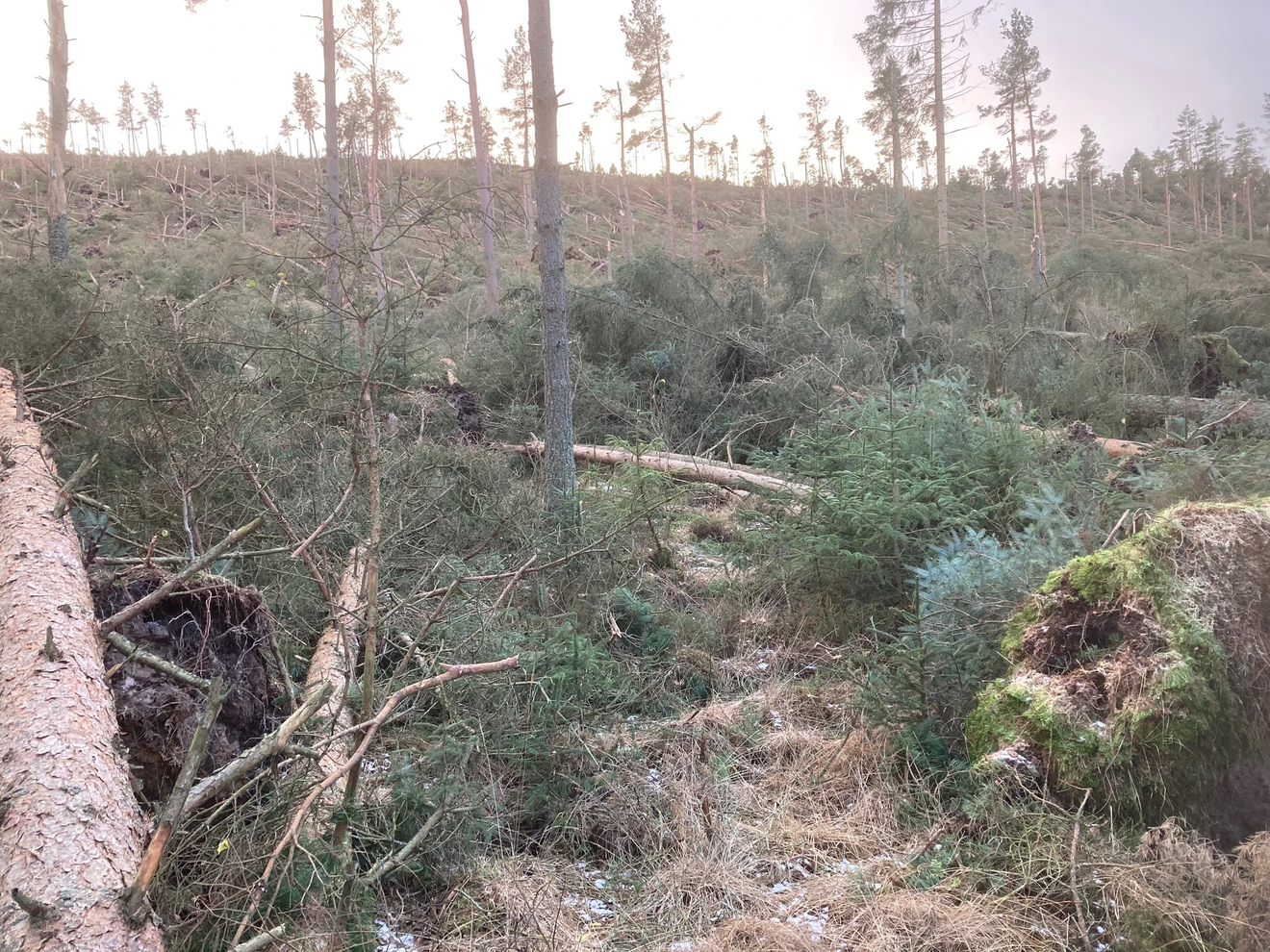
Mark Anthony Wiig also compared the devastation to war: "The storm just snapped the trees in half. It looks like a war zone"
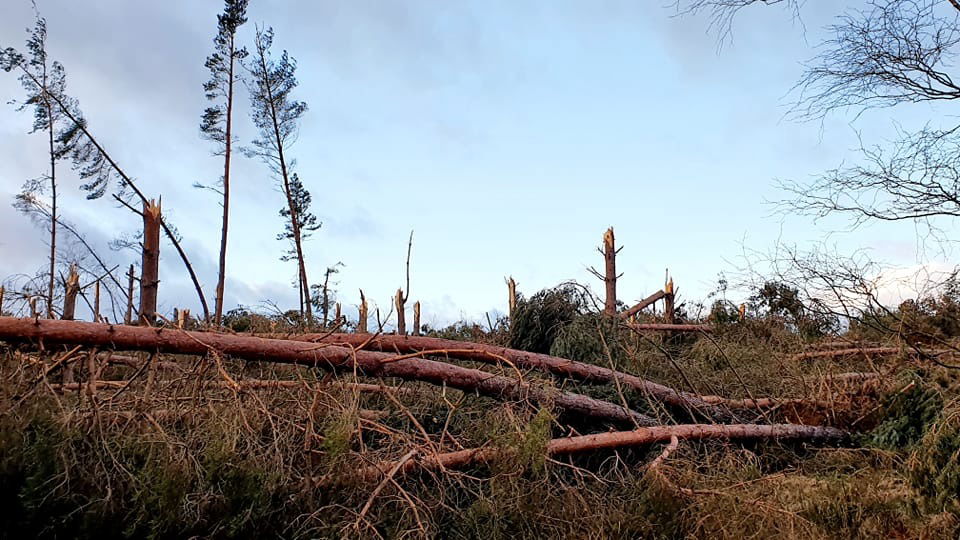
Photo: Mark Anthony Wiig
Below are images by the Northumberland National Park Mountain Rescue Team in Alwinton. The team were deployed to one of the most remote farmhouses in Northumberland to deliver some urgent medication on behalf of Rothbury Practice. They report "On the drive there, the devastation caused by Storm Arwen was plain to see, particularly in the forests. Swathes of woods including Harbottle, Kidland, and Uswayford, amongst others in our operational area, have all been affected by uprooted trees, loose branches, and blocked access. There is the risk from hanging trees - those that have been blown over, but have been caught on other trees - which could fall with little or no warning."
I know the whole community send their heartfelt gratitude to this wonderful team.
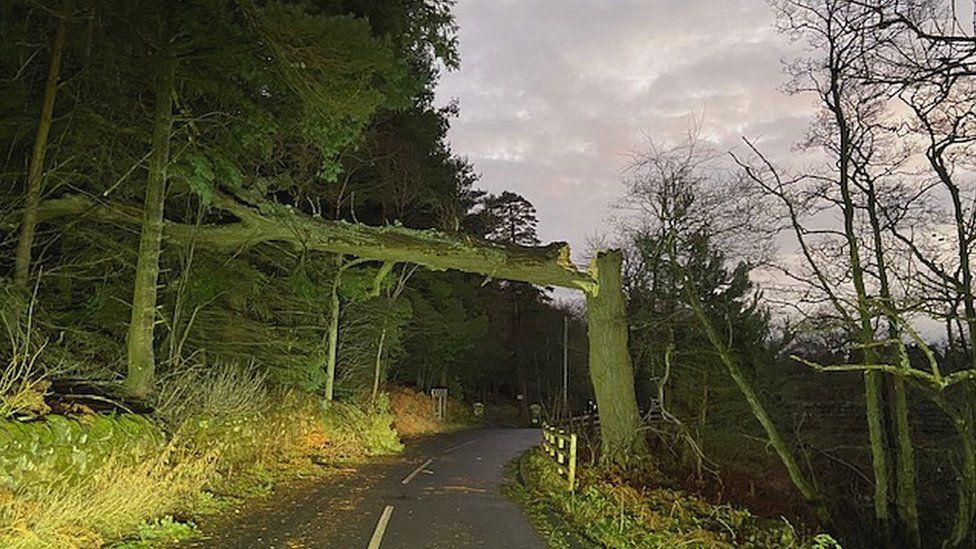


In Alnwick, Emma Bell took these photographs of two huge trees by the Lion Column. Emma says: "I was sad to see these being completely wiped out by the storm - they were such an amazing feature in that bit of the park, it is such a shame to see them down."
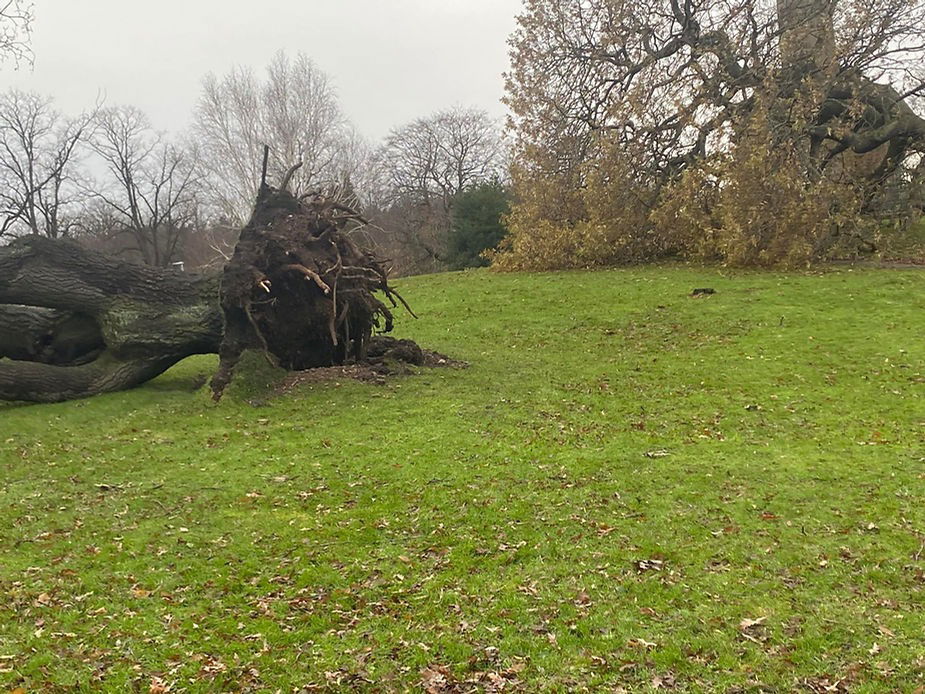

But there is always hope. Thank you to Barbara Campbell for this picture of a tree felled by a storm years ago in Suffolk. She says: "The tree, though fallen, is growing upwards from the trunk on the ground".
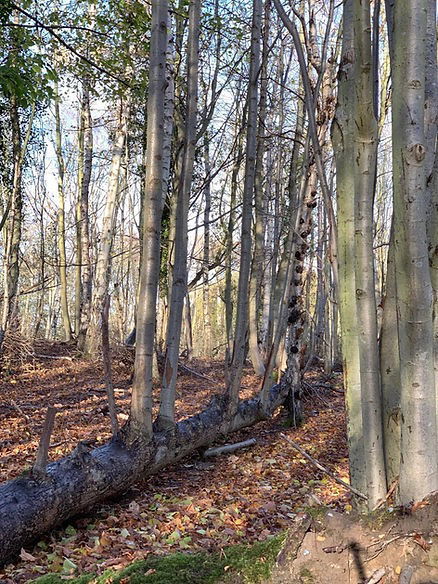
In our Community Magazine, Over the Bridges, Michael Boxall wrote about the trees which have been felled by the Storm. Michael is a man who knows more than most about trees, and nature.
Notes from Coquetdale The fingerprints of Storm Arwen will be visible for many years, not least in the rotting root plates and trunks of windblown trees which will never be cleared away, but this will not be such a bad thing.
I remember, as a nature reserve warden in Hampshire, having to deal with the results of the 1987 and 1990 hurricanes. There were panic-driven rushes to “repair” the dreadful devastation and money was thrown into replanting schemes, in many cases for which there was no need.
I can understand commercial plantations being replanted. They are a crop and a source of income for their owners. Urban trees also.
But more natural woodlands may be better left alone beyond clearing rides and trackways. Nature has “repaired” such damage countless times in the past with no assistance from us and given the opportunity will do so again far more thoroughly than we can.
Unless there is an urgent need for action just sit back and watch for a few years. The scars will soften, regeneration of trees, shrubs and herbs will occur wherever light reaches the woodland floor and wildlife, in general, will benefit.
Vertical root plates provide nest sites for birds and insects such as mining bees, the timber will be colonised by rotting fungi and become food for the larvae of woodboring beetles which will in turn be sought by woodpeckers. A whole new web of life will develop if allowed to do so.
Some fallen trees will continue to grow, their side limbs becoming new vertical trunks and all will become increasingly right with the natural world, though the untidiness may offend some human minds who prefer everything to be neat and orderly.
It is a great shame the storm felled so many old trees. They support a wide variety of lichens and fungi and offer cavities and crevices for birds, bats and insects to utilise, which their younger brethren have not had time to develop. Our activities in the past have ensured there are few older than middle-aged trees to take their place and absolutely nothing can be done to remedy this situation. Indeed, even now, for a variety of reasons, old trees continue to be felled, some justified, some definitely not.
Planting millions more trees may help restore biodiversity and slow climate change, but the right species and only in the right places, please.
We must not destroy already important habitats.
An article written in the Newcastle Chronicle on 17th February 2022 brings some hope and comfort. Daniel Hall tells us about a project: The Kielderhead Wildwood Project, which found an important and iconic 110-year-old pine uprooted by the storms. He describes the new life which is growing from this "...the fallen tree is set to leave a legacy, with young shoots from the branches of the fallen tree, as well as the six still standing, will be grafted onto a new batch of saplings for planting at a later date". You can read the article here: New life to come from one of Kielder's oldest trees destroyed during Storm Arwen - Chronicle Live
